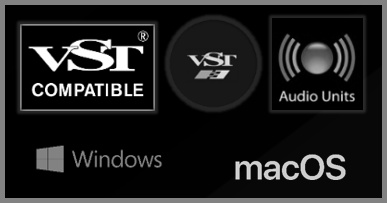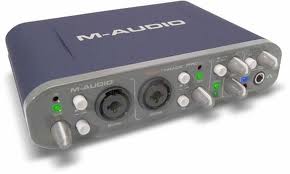Digital Audio Workstations

A
Digital Audio
Workstation (DAW) is an electronic system designed solely
or primarily for recording, editing and playing back digital
audio.
Dr. Robert Moog
was the pioneer of the analog synthesizer. His visionary work
is recognized by all who participated at the leading edge of
music synthesis.
As personal
computing became even more personal over the years, we saw
complex tasks becoming simpler and easier as big, clunky
equipment got smaller, faster, lighter and considerably less
expensive.
Take the Digital
Audio Workstation (DAW), for instance. DAWs are computer-based
systems designed to digitally record, play back and edit audio
tracks. Previous recording systems were primarily “analog” in
nature, recording sound waves onto tapes. The introduction of
the DAW marked the first big step into the realm of modern
digital recording, converting sound into digital data (and
back) for more precise recording and easier editing.
The first
integrated DAWs, however, relied heavily on expensive hardware
for digital processing. Although DAWs were already prevalent
in many parts of the world in the early 90s, their reliance on
fancy and costly external digital signal processors (DSP)
placed them sadly beyond the reach of common PC users and
struggling musicians like, well, us. As such, DAWs were seen
only inside big-ass recording studios at the time.
Then, in 1996,
Hamburg-based German company Steinberg released Cubase VST, a
groundbreaking piece of audio software that totally
revolutionized tapeless, multi-track PC recording. In its
first version, Cubase was already capable of recording,
playing back and editing up to 32 tracks of digital audio on
an Apple Macintosh without the need for elaborate DSP
hardware. Cubase VST featured a graphical interface that
simulated actual recording consoles and mixers, complete with
the standard knobs and switches found in analog recording
boards. This was a first in audio recording software and all
the other DAW software makers modeled their subsequent
releases on this trailblazing Cubase interface.
Slowly but
surely, digital multi-track recording became more accessible
with lowly PC systems as
professional-quality digital recording software became more
prevalent and audio interface hardware became much smaller and
markedly cheaper.
M-Audio Fast
Track USB: A DAW essential
The next logical step is to look for an inexpensive
gadget that would allow you to hook up guitars and microphones
to your system. The minuscule and
inexpensive M-Audio Fast Track USB, an audio interface
peripheral that doubles as an external soundcard.
Now, so many
underground bands record their material using either their own
makeshift DAWs or those of their peers, with results
comparable to mainstream releases. Proving that technology has
indeed become the great equalizer, independent musicians are
now capable of coming out with albums whose audio quality can
rival those recorded by major label artists in fancy and
expensive recording studios.
Modern PC
recording technology has given struggling musicians a
relatively inexpensive way to document their artistry and get
their music heard. But as easy as it is now to be heard, it’s
still a difficult thing to ensure that what we put out makes
any kind of difference in the world. For at the end of the
day, it’s still the music that matters.

